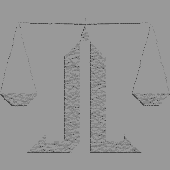

Pruzbul
Rabbi Alfred S. Cohen
The Pruzbul Is Instituted
Despite the important moral and religious lessons to be learned from the mitzvah of shemitat kesafim (cancellation of debts), and despite the fact that observance of this practice is a specific Torah directive, covered by both a positive command -- to cancel -- and a negative one-not to forego lending in order to avoid losing the loan-the reality is that when economic circumstances became difficult, not all people were able to live up to these high ideals. The rich simply refused to lend money to the poor as the Sabbatical Year approached. Consequently, some two thousand years ago, Hillel the Elder came to the conclusion that drastic action had to be taken. Thus, he instituted the pruzbul.Rabbis do not have the authority to cancel a Torah imperative nor to override that which the Torah forbids. However, Hillel realized that, in effect, observance of the law mandating cancellation of all debts -- part of whose rationale is to prevent the poor from being saddled with a crushing burden of debts -- resulted in the poor being deprived of the ability to borrow, so that they were actually worse off than they might have been without the protection of shemitat kesafim. Furthermore, by not lending, the rich were committing a severe transgression, ignoring the Torah's command to help out the poor. Under the circumstance, Hillel devised a system -- the pruzbul which would permit a debt to be collected even after the Sabbatical Year, yet without violating the Torah's command. In this way, he would actually be helping all Jews -- the rich would not shirk their responsibility to help the poor, and the poor would benefit by being able to borrow money to tide them over a rough spot.
The pruzbul is a legal device which, in effect, transfers a private debt to the beth din, the Jewish court. Shemitat kesafim cancels only debts between people, not monies owed to court. Therefore, the court is able to collect the debt whenever it desires, even after the Sabbatical Year. Moreover, Jewish courts have the power to transfer assets as they see fit (hefker beth din hefker), and they are able to transfer the court's lien -- the loan -- to the original lender and make him the "agent of the court" in collecting it; then the court can transfer these monies to him. In this way, through use of halachic technicalities which are perfectly legal, Hillel in effect devised a system for avoiding the consequences of shemitat kesafim.4
Despite the technicalities, the Gemara wonders how Hillel could undertake to nullify a practice mandated by the Torah. 5 Two answers are offered: First of all, shemitat kesafim applies (biblically) only when the laws of shemita apply to land and agricultural produce. Since nowadays the biblical law of shemita is not in effect, neither is the law for cancelling debts, which nowadays is only a rabbinic institution. Since it is only a rabbinic law, the rabbis are empowered to cancel their own law by implementing the device of the pruzbul. The second answer given is that even if shemitat kesafim is still viable as a Torah law, nevertheless, Jewish courts have the power to confiscate property. It was this power which Hillel employed to have the courts take possession of private debts and collect them as they wished.
In any event, the "bottom line" is that if there is cancellation of debts today, it is due to rabbinic fiat, and the rabbinic device of pruzbul enables the lender to collect his debts even after shemita.
1 | 2 | 3 | 4 | 5 | Notes

DISCLAIMER
|
|
Page 2 of 5 |
|